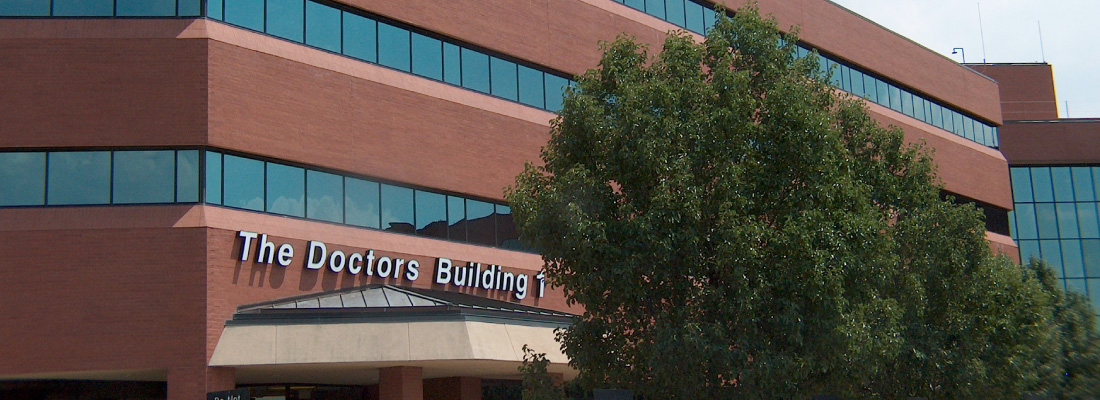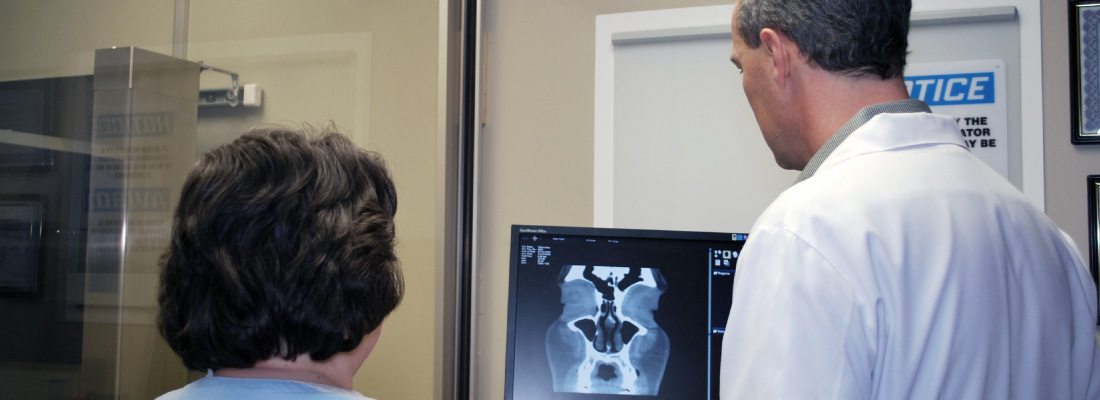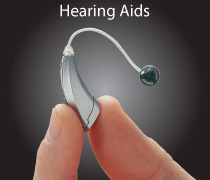Fungal Sinusitis
Fungal sinusitis is a broad term used to describe various situations when fungus might be involved in the cause or symptoms of nasal and sinus inflammation. Fungus is an entirely separate “kingdom” from plants and animals; they are plant-like but cannot create their own food like plants do. Because they do not contain some of the proteins that plants use to harness the energy of the sun, fungi (plural) must absorb their nutrients from other organisms. Usually, fungi get their nutrients from dead or dying organisms, but can infect human beings as well (like infections of the skin or toenails).
The number of fungal infections has increased over the past few decades. Part of this may only be related to an increased awareness of fungal involvement in our environment, but may also be due to other things. While the body is usually able to fight off fungal infections easily, other conditions that compromise the immune system can encourage fungi to thrive. This includes conditions such as diabetes, leukemia or lymphoma, congenital immunodeficiencies (when the immune system does not work because of genetic problems), overuse of antibiotics, receiving medications to prevent organ transplant rejection, and other situations.
What Are the Symptoms of Fungal Sinusitis?
Symptoms of fungal sinusitis are similar to other forms of sinusitis, including:
- Nasal congestion
- Facial pain/pressure
- Loss of smell or foul odor in the nose
- Nasal drainage
Fungal sinusitis can be quite severe in anyone with a compromised immune system, and can cause:
- Changes of the skin (pale or black)
- Numbness of the face
- Facial swelling of cheeks or eyelids
What Causes Fungal Sinusitis?
There are four types of fungal sinusitis:
Saprophytic Fungus—This happens when fungus or mold grows on top of mucus or mucous crusts inside the nose. In this case, the fungus is not really infecting the nasal tissue, it’s just “living” off the mucus in the nose. This may not cause any additional symptoms that were not already present, and treatment is simple removal of the crusts with nasal washes or other methods.
Fungus Ball—This is caused by fungus getting caught in one of the sinuses, forming clumps of material that often contain bacteria as well. This is most often in the maxillary, or cheek, sinus, and usually occurs in patients whose immune system is working fine. Often there are no symptoms, other than slight discomfort until the fungus ball grows large enough to block off the sinus. This form of fungal sinusitis requires simple surgery to open and wash out the sinus. Anti-fungal therapy is generally not prescribed.
Allergic Fungal Sinusitis (AFS)—This form of fungal sinusitis results from an allergic reaction to any one of several different common fungi, and usually occurs in patients whose immune system is working well. Patients may only notice allergic-like symptoms of nasal congestion, runny nose, and sneezing. As AFS gets worse, it can cause the sinuses to fill with thick mucus. Eventually, the sinuses can get bigger and start changing the appearance of the eyes and face. Surgery is required to treat this form of sinusitis, and without continued medical therapy afterwards, recurrence is common.
Invasive Fungal Sinusitis—This is a severe infection of the nasal and sinus lining that can lead to the destruction of nasal/sinus tissue. There are three different forms of invasive fungal sinusitis:
- Chronic Indolent/Granulomatous Sinusitis is a very rare disease which is usually not seen in the United States. Patients have a normally functioning immune system but for some reason the presence of the fungus results in a severe immune response that destroys the lining of the nose.
- Chronic Invasive Sinusitis is seen in patients who do not have a normally functioning immune system. Typically, this is seen in patients with diabetes. The fungus invades the tissue of the sinuses, but the disease progresses very slowly.
- Acute Fulminant Invasive Fungal Sinusitis is seen in patients who do not have a functioning immune system. Severe diabetics, transplant patients, and those with lymphoma or leukemia are at the highest risk. In this disease the fungus invades and destroys blood vessels that line the nose resulting in the death of that tissue. This is a life-threatening disease and often requires emergency surgery and anti-fungal medications.
What Are the Treatment Options?
Typical treatment options are noted in the individual causes of fungal sinusitis described above. Frequently, some sort of surgery or procedure is required to physically remove the fungus, the mucus that contains it, and sometimes the tissue that has been affected.
Antifungal medications can be used as well, but usually not without a surgery. There have been some studies that indicate that antifungal medications called “azoles,” such as itraconazole, can be useful in treating allergic fungal sinusitis. With invasive fungal sinusitis, use of antifungal medications is required.
What Questions Should I Ask My Doctor?
- How can we tell if fungus may or may not be involved in my sinusitis?
- Should we consider oral or topical antifungal treatments?
- What kind of surgery might I need?
- Will I need more than one surgery?
Fine Needle Aspiration
Fine needle aspiration (FNA), also called fine needle biopsy, is a type of biopsy where a needle is inserted into a lump or mass to collect a sample of cells. These cells are then looked at under a microscope to help your doctor determine if the mass or lump is cancerous (malignant) or noncancerous (benign). Benign lumps may also be related to infection or inflammation. FNA can be performed on a variety of lumps that are either felt or identified on imaging tests (such as ultrasound or CT scan).
A few common reasons FNA is performed in the neck include:
- Nodules in the thyroid gland
- Enlarged or abnormal lymph nodes
- Neck cysts
- Lumps or masses in the salivary glands (i.e., parotid gland, submandibular gland)
Why is FNA Important?
A mass or lump may indicate a serious problem such as cancer. While many lumps are not cancerous, a biopsy is often needed to help determine this. FNA is frequently recommended because it is quick, has minimal discomfort, and can often be performed in the doctor’s office.
In addition to a biopsy, your doctor will ask you questions about your symptoms and history to help determine your risk of cancer. A few example questions may relate to weight loss, difficulty swallowing, smoking and drinking habits, and any personal or family history of cancer.
It is very important to note that, when found early, most cancers in the head and neck can be cured. Cancers that are caught early have the highest cure rates. So, play it safe! If you have a lump in your head and neck area, see your ENT (ear, nose, and throat) specialist, or otolaryngologist, as soon as possible for an evaluation.
What Happens in FNA?
A small needle is inserted into the lump to remove cells that are then examined under the microscope to make a diagnosis. Multiple sticks with the needle may be performed to get enough cells. If the lump is difficult to feel, an ultrasound device can be used to help direct the needle into the lump.
Local anesthesia (numbing medicine) may be injected into the skin over the area where the biopsy will be performed. Although not painless, the discomfort from FNA is usually minimal and can be treated with ice or Tylenol® if needed. Most often, the needle used for FNA is smaller than a needle used for a blood test from the arm (venipuncture).
Although no test is perfect, FNA is generally accurate and can often be used instead of an open surgical biopsy, which is usually more painful, costly, and may require the patient to be asleep.
Typically, the results from an FNA are available after a few days. These results may indicate a cancerous (malignant), noncancerous (benign), or indeterminate (uncertain) diagnosis. If the diagnosis is uncertain, your doctor will talk to you about whether another FNA or different type of procedure may be needed.
Are There Any Potential Complications?
No medical procedure is without risks, but complications from FNA are uncommon and usually minor. Some examples include:
- Sometimes the results of an FNA are inconclusive, in which case another FNA or a different type of biopsy procedure may be needed.
- Bleeding is the most common complication, although when it occurs, it is usually only a small bruise. Bleeding is more common in patients who take aspirin, Advil®, or blood thinners such as warfarin. You should let your doctor know if you are on any of these medications in case they need to be held prior to biopsy.
- Infection from FNA is very rare.
- Spreading a cancer with an FNA biopsy is very rare as the needle used is very tiny.
What Questions Should I Ask My Doctor?
- Can I eat before an FNA?
- Can I drive home after an FNA?
- Do I need to prepare for an FNA?
- Do I need to limit my activity after an FNA?
- Is there anything I should watch out for after my FNA?
Earwax (Cerumen Impaction)
Ears and Altitude (Barotrauma)
Ear problems are one of the most common medical complaints of airplane travelers and divers. While they are usually minor annoyances, sometimes they can cause significant symptoms. When the eustachian tube in your middle ear is blocked due to altitude or pressure changes (sometimes called barotrauma), air cannot be equalized, and a vacuum occurs. This stretches the eardrum and causes pain and occasionally fluid. The common cold, sinus infections, and nasal allergies can also interfere because swollen membranes in the nose can extend into the eustachian tube and block it (see “What Causes Barotrauma?” below).
What Are the Symptoms of Barotrauma?
Some symptoms of barotrauma include:
- Ear pressure
- Ear pain
- Hearing loss
- Dizziness
What Causes Barotrauma?
The eustachian tube is a membrane-lined tube about the width of a pencil lead that connects the back of the nose with the middle ear and helps maintain balanced air pressure on both sides of the eardrum. The most common cause of eustachian tube blockage is the common cold, but sinus infections and nasal allergies are also usual suspects. A stuffy nose leads to stuffy ears because the swollen membranes in the nose can extend into the eustachian tube and block it. Also, any situation in which rapid altitude or pressure changes occur, such as air travel, riding in an elevator, diving to the bottom of a swimming pool, or scuba diving, can affect proper function of the eustachian tube.
What Are the Treatment Options?
The simplest way to help clear your ears—particularly when flying—is to swallow. Yawning, chewing gum, or sucking on hard candy can help, especially just before take-off and during descent. You can also try pinching your nose, taking a mouthful of air, blowing gently (not forcefully) against your pinched nose, then swallowing. You’ll know if it worked when you hear a pop, and your ears feel less plugged.
Babies and children are especially vulnerable to ear blockage because their eustachian tubes are narrower than in adults. Plus, babies cannot intentionally pop their ears, but sucking on a bottle or pacifier can help. You and your children should avoid sleeping during descent because swallowing may not occur often enough to keep up with changes in air pressure.
If you have allergies, take your medications at the beginning of your flight. Over-the-counter nasal sprays or decongestants can also help air travelers to shrink the membranes and help the ears pop more easily. However, if you are pregnant, or have heart disease, high blood pressure, irregular heart rhythms, thyroid disease, or excessive nervousness, consult your physician before using these medications. Extended use of decongestant nasal sprays can also cause more congestion than relief, and even result in a type of addiction.
If your ears fail to open, or if you are experiencing persistent pain in your ears, seek the help of an ENT (ear, nose, and throat) specialist, or otolaryngologist. They may recommend inserting small pressure equalization tubes or a balloon to help dilate your eustachian tubes. Or, they may need to release the pressure or fluid with a small incision in your ear drum.
What Questions Should I Ask My Doctor?
- What can I do to prevent barotrauma from occurring?
- Who do I see if the pressure doesn’t resolve quickly?












